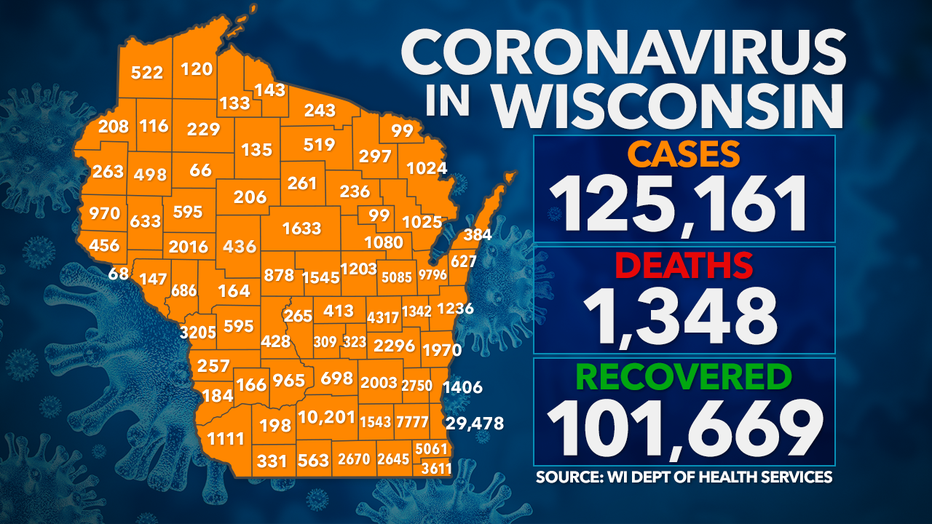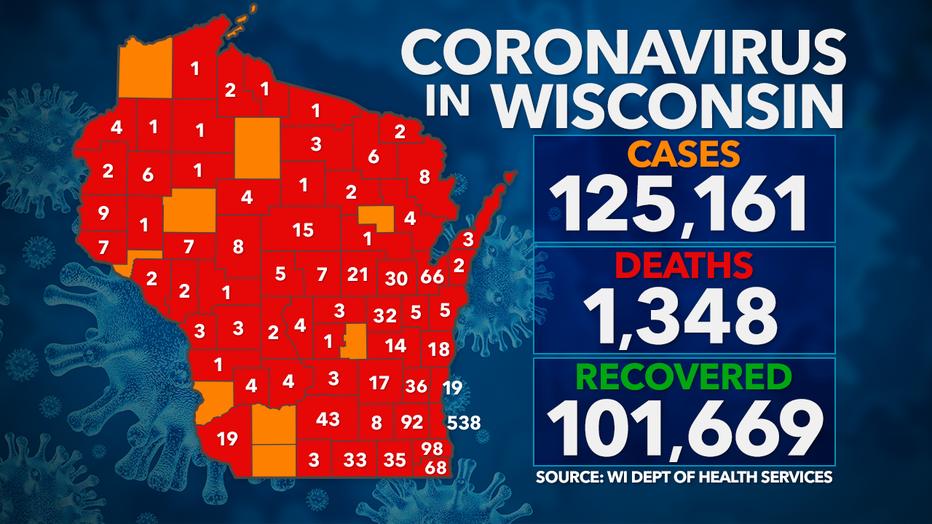Wisconsin becoming national COVID-19 hot spot as cases rise

Wisconsin becoming national COVID-19 hot spot
As COVID-19 cases in Wisconsin rise, the state is among the top three nationwide in terms of reported cases over the past week -- trailing Texas and California according to the CDC.
MILWAUKEE - It can be hard to comprehend the toll that the COVID-19 pandemic has taken in the U.S. More than 7.2 million cases have been confirmed and more than 200,000 deaths have been reported.
Wisconsin is third in the country as of Thursday, trailing Texas and California according to the U.S. Centers for Disease Control and Prevention, with the most cases in the past week -- averaging roughly 2,400 new cases per day.
"This is a grave, stark reminder for all of us in our state that COVID-19 isn't over," said Gov. Tony Evers.
Dr. Mary Beth Graham, an infectious disease specialist with Froedtert, is alarmed by the rising numbers.
"The hot spot is the upper Midwest and Wisconsin is definitely leading the way," said Graham.


On Thursday, the Wisconsin Department of Health Services (DHS) reported 2,887 new cases -- a single-day record -- and 21 new deaths. It is the state's third-highest daily death total since the pandemic gean.
"If you look at the total number of cases, the majority of cases have been in Milwaukee County. But right now the hot spots are north," Graham said.
Those hot stops include areas like Green Bay and the Fox Valley metropolitan areas.
As of Thursday, the state has more than 22,000 active cases -- more than half the capacity of Miller Park.
DHS numbers show COVID-19 hospitalizations are growing, with more than 660 currently hospitalized in Wisconsin. Health systems in northeastern Wisconsin said this week that they are nearing capacity.

"They're looking like what we did back (in the spring) which is concerning," Graham said.
Graham noted that more is now known about the virus, and there are some treatments that can help.
However, Graham said "this is (about) personal accountability and personal behavior" or a lack thereof. It has Wisconsin at number three in the nation, and rising -- and not in a good way.
FREE DOWNLOAD: Get breaking news alerts in the FOX6 News app for iOS or Android.
A concern for infectious disease specialists, like Graham, is that people will spend more time inside as it gets colder -- a transition that coincides with the beginning of flu season. And the pandemic isn't ending any time soon.
Related
DHS: 2,887 new positive cases of COVID-19 in WI; 21 deaths
State health officials reported 2,887 new positive cases of COVID-19 in Wisconsin Thursday, Oct. 1, and 21 new deaths.
Related
Record COVID-19 hospitalizations in Wisconsin: 'We must take action'
While many feel like they're running out of steam, Gov. Evers urged residents to clamp down on social distancing and mask use and to say no to plans with people outside of their household.
Related
Wisconsin virus cases surge amid 'perfect storm of factors'
Milwaukee County leaders provided the latest updates and information regarding the COVID-19 pandemic on Thursday.




